Your Company Can Drive Civic Engagement: Here's Why Your Actions Matter


As of press time, over 70 million Americans have already cast their ballots, a level of civic engagement unthinkable just a year ago.
Much of this is because of the passions on both sides of the political divide. But we also have to give credit to the civic leaders, nonprofits and even companies that have supported efforts to get out the vote this election cycle.
To that end, last week we wrapped up the 3BL Virtual Forum by speaking to leaders from both the private and nonprofit sectors to weigh in on why it’s so important to them that anyone eligible to vote in the U.S. does so.
One common thread you’ll find is that several of these individuals are advocating for either citizens who often find too many barriers to vote (as in, essential workers), or one stakeholder group that doesn’t have a voice, the environment. Here's what they had to say last Thursday during the Forum.
Sarah Bonk, founder and CEO of Business For America
“There are activities that businesses can do right now — whether it’s using their products or using their resources, staff or funds — to help run elections with integrity this year. Businesses care about a lot of things; we have all these purpose-driven businesses that want to create good in the world — brands with purpose.
“Our democratic process is crucial to achieving that. We’re not going to make progress on climate, on racial equity, on protection of essential workers without having government policies that are aligned with those outcomes.”
Delia de la Vara, SVP of development and strategic initiatives for UnidosUS
“The clients and the community that our organizations serve are those frontline workers, essential workers, who don’t really have a choice and an option to work from home and are going into a day-to-day workforce or an environment where they are uncertain what they may be bringing back to their households.
“We also want to make sure that the issues we think are important — about the economy, about healthcare access, about education and immigration — are part of the political discourse. So often, the issues we get to talk about or that make it to the light of day as it relates to Latinos are only about immigration reform. But the top issues for our community in poll after poll, for years, have been jobs and the economy, and right behind that is healthcare access. Those are three defining factors for how we succeed and how we move in the country.”
Claudia Bojorquez, director of strategic partnerships and corporate social responsibility at Univision
“We’re continuously seeking to play a role in creating campaigns on issues that are most important to the Hispanic audience. If you look at our history, getting involved in social impact issues is really part of our DNA. It’s really who we are and who we’ve stood for over the past 60 years. Because of this, our audience has grown up watching Univision and really trusts us, and that special connection to our audience is really unparalleled.”
Maxwell Zoric, senior director of social impact at MTV and Comedy Central
“We have been working over the last year, even before the pandemic, to think about a new strategy to get younger people, first-time voters, to really understand their options to vote early ... We started with about 10 partners and now we have more than 2,500, including big brands like Twitter, Snapchat, Facebook and stores like REI. There are going to be big brands getting their audiences’ attention on voting early, but also working at the local level.”
Michael Martin, founder and CEO of Effect Partners
“Voting is the most important thing you can do to tackle climate change, and there’s two main reasons for this. First: Over the last two elections, if you average the number of people who care about the environment who voted, there’s only about 35 percent. You compare that to the NRA — 80 percent of NRA members voted. If all those voters who cared about the environment had voted in the last election, that would have been 10 million voters, and as we all recall the last election was decided by about 77,000 votes, and we all know what that led to.
“The other reason it’s absolutely critical is because pollsters poll people who vote — they don’t poll people who don’t vote. What that means is that politicians will introduce legislation that has to do with what people care about in polls, and if the environment doesn’t show up, they don’t introduce that legislation. So, it’s critical if you care about climate change to get out and vote.”
David Dietz, social responsibility program director for the NBA
“We view this as our civic duty. Our society and our democracy work best when everyone can have their voices heard. It’s 2020, and as we as a society are dealing with COVID-19 and the ongoing impacts of systemic racism, we feel we all have a responsibility to step up and find ways to support one another. Everything we do, we do collaboratively with our players and teams, and we really try to lead with our values. This is no different. We’re essentially trying to do our part and help encourage folks to get engaged.”
Be sure to sign up for the weekly Brands Taking Stands newsletter, which arrives in your inbox every Wednesday.
Burger King Dips Its Toe Into the Circular Economy


Last year, an Impossible Whopper — next year, reusable packaging? Burger King has been leading the charge on food service sustainability and is now taking a step into the circular economy. The fast food chain announced earlier this month that it will begin offering reusable packaging, starting next year. A trial will begin at select restaurants in New York, Portland and Tokyo for sandwiches and drinks.
Making this move possible is Burger King’s partnership with TerraCycle’s Loop initiative, which facilitates corporate transitions to reusable packaging.
The trial is part of Burger King’s goal to source all packaging from renewable, recyclable or certified sources by 2025. And this step forward couldn’t have come at a better time, as many restaurants have resorted to single-use options during the coronavirus pandemic.
Easy, reliable reusability with Loop
Burger King isn’t alone in joining Loop and striving to find its niche in a circular economy. Last month, McDonald’s announced it would be testing reusable cups in the United Kingdom next year. Coffee chains on both sides of the Atlantic Oceans have also experimented with rolling out reusable cups.
Loop, currently available in the United States, France and the United Kingdom, makes reusability doable by creating practical, even enhanced, packaging designs and providing a sanitizing system that rivals the sterility of single-use options, Heather Crawford, Loop’s global VP of marketing and e-commerce, told TriplePundit earlier this year.
Though 2021 will start with a trial, Burger King is confident in Loop’s system, and hopes it will encourage a transformation in the industry.
“As part of our Restaurant Brands for Good plan, we’re investing in the development of sustainable packaging solutions that will help push the food service industry forward in reducing packaging waste,” Matthew Banton, Head of Innovation and Sustainability, Burger King Global, said in a statement. “The Loop system gives us the confidence in a reusable solution that meets our high safety standards, while also offering convenience for our guests on the go.”
Customers who request reusable packaging at participating stores will be charged a deposit and encouraged to claim their refund by returning the cups and boxes to an in-restaurant collection system where they will be safely sanitized.
Cleaning cups, engaging customers with the circular economy
Burger King’s push for reusability has the potential to make a dent on the plastic waste crisis threatening the oceans, but it can also engage consumers in a new way. Reuse: Rethinking Packaging, a book from the Ellen MacArthur Foundation, highlights how deposit and reward schemes can increase brand loyalty. The book also notes how an improved design can improve customer experience, especially as reusable containers are more durable and potentially more leak-proof.
Data has also revealed the revenue potential in sustainability. Half of the growth consumer packaged goods (CPG) saw between 2013 and 2018 came from sustainability-marketed products, according to research from NYU Stern’s Center for Sustainable Business, using data from market research company IRI.
Currently, food and packaging collectively account for almost 45 percent of landfilled waste in the U.S., according to the U.S. Environmental Protection Agency. Fast food, by its very nature, has contributed massive amounts to this accretion, especially as containers are rarely getting recycled.
Reusability almost sounds like an oxymoron in the context of fast food — that is, until Loop entered the picture, making reusability fast in its own way, and showing that innovation unlocks new views of the circular economy. Restaurants like Burger King are helping to bring the milk man to the 21st century — the land, the climate and the ocean will thank us for buying in.
Image credit: Burger King/Business Wire
The World’s Single Largest User of Oil is Going Carbon Negative

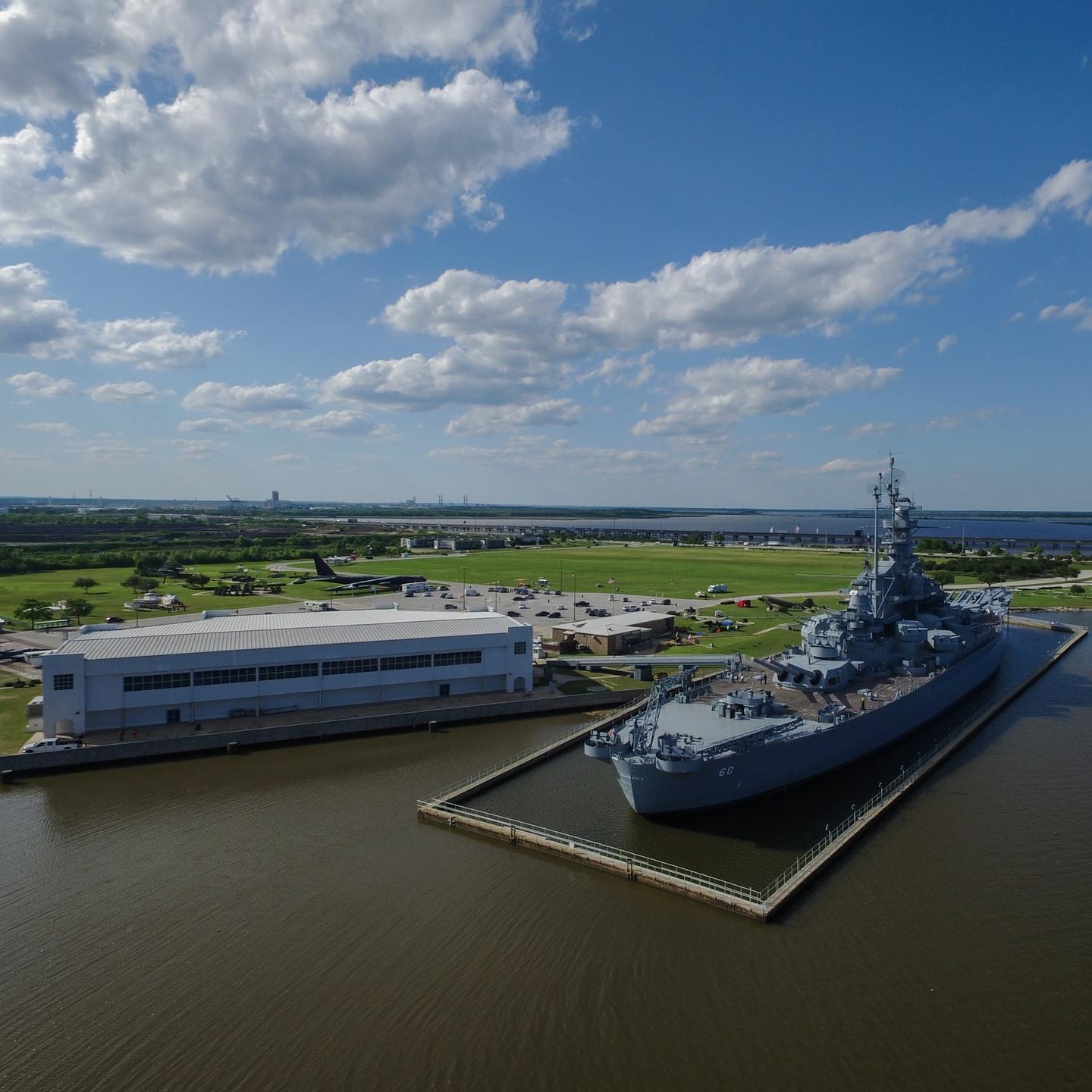
When President Donald Trump pulled the U.S. out of the Paris Agreement on climate change, perhaps he forgot to notify the Department of Defense. The U.S. military is more determined than ever to shed fossil fuels in favor of a carbon-negative future, and its efforts provide a roadmap for business leaders to follow.
Treat an existential threat for what it is — an existential threat
At the bare minimum of competence, any CEO would acknowledge the reality of circumstances that threaten their company’s very existence, and act on them with urgency.
During the Barack Obama administration, the Department of Defense did just that. It issued a planning document titled, “Climate Change Adaptation Roadmap.” That roadmap took note of climate impacts on global resources, leading to an intensification of conflicts around the world and an increased demand on humanitarian intervention. DoD also formally classified climate change as a national security risk in its Quadrennial Defense Review.
The Defense Review was a time-limited document that ceased publication several years ago. It was more or less replaced by a classified document titled "National Defense Strategy." A brief, unclassified version published in 2018 provides little hint of concern over climate change specifically, though it does emphasize resiliency, readiness and modernization, especially in the area of advanced technology.
Nevertheless, the Defense Department’s climate concerns continued into the first days of the Trump administration when the President tapped James Mattis to lead the agency. In July 2017, Mattis informed Congress that climate change is a “driver of instability” that can have an impact on "areas of the world where our troops are operating today.”
Though Mattis was forced out in December 2018, his concerns have continued to resonate. Last year, the Defense Department issued a new document titled, “Report on Effects of a Changing Climate to the Department of Defense.”
Though issued through the somewhat obscure office of the Under Secretary of Defense for Acquisition and Sustainment, the report is forceful in its identification of climate change as a national security issue “with potential impacts to Department of Defense missions, operational plans and installations.”
Recruit top talent, support it organizationally, and deploy it effectively
The unclassified version of the National Defense Strategy may be thin on climate change, but it does dwell at length on the urgent need to “change Departmental mindset, culture, and management systems.”
To that end, the document calls for “establishing an unmatched 21st-century National Security Innovation Base that effectively supports Department operations and sustains security and solvency.”
Specifically, the Defense Strategy states that “recruiting, developing, and retaining a high-quality military and civilian workforce is essential for warfighting success,” adding that the “creativity and talent of the American warfighter is our greatest enduring strength, and one we do not take for granted.”
The Defense Department has taken that message to heart in the area of climate action. Whether by consensus or self-appointment, the U.S. Air Force appears to have taken the lead role in the effort.
The Air Force is calling for a “carbon negative Department of Defense” through its AFWERX hub, which connects Air Force personnel with private-sector innovators and financial resources.
Collaborating with other agencies for a carbon negative future
Business leaders are already beginning to form global collaborative efforts in support of climate action, clean power, plastic pollution reduction and other environmental issues.
The Defense Department provides a model for funneling this energy into effective action. It is the lead agency in the U.S. Global Change Research Program, which aims to coordinate scientific research among cabinet-level federal agencies as well as NASA, the National Science Foundation, the Smithsonian Institute and USAID.
While acknowledging the absence of a formal mission on climate research, the Global Change program has tasked itself with “developing policies and plans to manage and respond to the effects of climate change on DoD missions, assets and the operational environment.”
Through Global Change, the Defense Department recognizes that its future survival depends on a coordinated, holistic effort that extends beyond the grounds of its own assets.
“Because the performance of DoD systems and platforms are influenced by environmental conditions, understanding the variability of the Earth’s environment and the potential for change is of great interest to the Department,” Global Change explains. “DoD is responsible for the environmental stewardship of hundreds of installations throughout the U.S., and must continue incorporating geostrategic and operational energy considerations into force planning, requirements development, and acquisition processes.”
Aim high and leverage available resources
At first glance, the idea of a carbon-negative Department of Defense may seem out of reach. Researchers have described the agency as “the world’s single largest institutional user of petroleum and, correspondingly, the world’s largest institutional producer of greenhouse gases.”
However, the agency already has a running start in biofuels, clean power, energy efficiency and other areas, and its buying power can help push the market for new clean technologies throughout the civilian supply chain.
More significantly, the agency’s enormous geographical footprint — including massive training grounds as well as built infrastructure — can be called into play for carbon recycling and sequestration.
The popular tree-planting movement is one example of the potential for leveraging Defense Department property for carbon sequestration. Researchers are also considering shorter cycles of growth, such as deploying captured carbon to cultivate algae for biofuels.
Soil sequestration is another pathway. In 2017, a U.S. Army research team took a look at the potential for achieving carbon neutral status on land owned by the Department of Defense through soil sequestration, and advocated for following up with additional research and data to optimize the practice.
As for the Navy and the Air Force, the sea and air can also become powerful resources for climate action and becoming carbon negative.
As recently noted by the office of U.S Rep. David Schwiekert (D-Ariz.), the Defense Department can explore the potential to harvest carbon from the sea and air and convert it into fuel. Schwiekert successfully advocated for research funding to be included in the 2019 National Defense Authorization Act.
The U.S. Navy has a head start in that regard, partly through a 2016 patent for a device that extracts both carbon dioxide and hydrogen from seawater, providing “all the raw materials necessary for the production of synthetic liquid hydrocarbon fuels.”
Regardless of White House policy, business leaders would do well to take their direction from the U.S. Department of Defense and ramp up a collaborative effort on climate action.
Image credit: JP Valery/Unsplash
The Business Case for Ensuring Election Integrity


The fate of American democracy hinges on preserving the legitimacy of November’s election. As CEO of The Leadership Now Project, a membership organization of business leaders committed to protecting democracy, I know business leaders play a vital role in restoring faith in the upcoming election. A few weeks ago, amid the emerging risks in the upcoming election, we saw the need for business voices to join experts and election officials of both parties who were already speaking out.
Americans agree: According to a recent poll, 3 in 4 Americans say that large companies have a role in preserving and protecting democracy. Last week we launched our statement, “America Has Held Successful Elections Amid Crises Before. We Can and Must Do So Again,” which compels business leaders to support a legitimate election and use their voices and influence to call for civility as we count every vote.
The truth is we are in the midst of a crisis for our democracy, and the stakes couldn’t be higher. Even before the pandemic and this chaotic election cycle, democracy was in peril. In 2017, we started digging into what was happening in American democracy, and what we found was deeply worrying. Trust in government was at an all-time low. Indicators of democratic functioning which we analyzed, such as money in politics, weak civic culture and distrust in our elections, led us to be concerned early on about the state of the 2020 election.
The pandemic and uncertainty around the election has exacerbated the strain to our democracy which we anticipated. We face significant operational challenges that make it difficult to vote: long lines, closed voting locations and a general collapse of voting infrastructure. In addition to these very real challenges, we’ve seen countless false narratives about the legitimacy of mail-in ballots and election fraud. This misinformation — combined with the reality that it will take days, weeks, or even longer to confirm the results of the election — has caused experts to worry that Americans will not trust these results.
Doubt about election integrity, combined with fears about a contested transfer of power, has left our country anxious about what will happen in November and afterward. Experts, like those at the National Task Force on Election Crises, are preparing resources to counter these many threats we face.
Business leaders have skin in the game, and we must step up to the plate. Premature or inaccurate election results — and the resulting long-term harm to democracy — would be detrimental to the stability of our economy and markets. Political dysfunction is, according to research by the Harvard Business School, the single greatest obstacle to U.S. economic growth. The health of the economy and of markets is directly tied to the strength of our democracy and election integrity.
But the business community does not have to accept this fate. Business leaders have the power to strengthen democracy, and, according to our polling, the majority of business leaders agree our system needs reform. Business leaders have the power to inspire their communities, employees, customers and networks. Business leaders have the responsibility to use their voices in this election.
Signatories of our statement, which include more than 200 business leaders in every industry from media to finance, call for patience and civility until every vote is counted. These business leaders affirm that they will not accept election results that are presented too early or that are based on insufficient data. As these leaders know, America has held secure elections in past crises like the Civil War, World Wars I and II, and the 1918 flu pandemic. We can and must do so again.
In this last push until Nov. 3, the business community must do its part to reassure Americans that every vote will be counted. But our engagement can’t end in November. Fixing democracy is a long-term project. Although this critical moment demands all hands on deck to protect our democracy, the seeds of dysfunction were planted before 2020. And the business community must be involved with the efforts to reform our system and secure election integrity as we move toward a more inclusive and fair country for all.
Image credit: Wiki Commons
How AI Helps Amazon Improve Sustainable Packaging


Amazon CEO Jeff Bezos has an oft-repeated mantra that “it’s always day one” at his company. On that point, sustainable packaging at the e-commerce giant has been on the radar for some time.
As far back as 2008, the question of how to improve packaging was on the Bezos’ mind. Trying to unwrap heavily packaged Christmas presents with his kids was one reason he understood the need to transform Amazon’s packaging and get rid of what many have called “wrap rage.”
The result was what Amazon now calls “frustration-free packaging.” This means packaging that is easier to open, fully recyclable and avoids hybrid materials. More recently Amazon has turned to artificial intelligence (AI) to help make a dent in the company’s packaging waste, an equally compelling problem for the company given its large environmental impact.
Over the last five years, AI applications have helped Amazon achieve a 33 percent reduction in packaging requirements. That’s a saving of more than 915,000 tons of packaging material, which equates to the elimination of 1.6 billion shipping boxes. This was achieved through a partnership between its packaging experience team and its Amazon Web Services business to create a machine learning system for packaging requirements. The team used SageMaker, a cloud-based machine learning app, to automatically optimize packaging choices at fulfillment centers. What this has ultimately enabled is a greater flexibility in how every order is packaged for delivery.
AI quietly leads the way on sustainable packaging
AI has enabled Amazon to make more sustainable packaging decisions instantly. To have a human manually sort out the right packaging for every order at Amazon would simply be unworkable. This is because of the sheer size and variability of its product catalogue, which changes by the day, Kim Houchens, director of customer packaging at Amazon, told Fast Company.
Matthew Bales, a research science manager in Amazon’s customer packaging team, expressed similar sentiments in his interview with FastCo — remarking that it would take a human “greater than the time we have here on Earth” to do what AI algorithms can achieve effortlessly. With deliveries in July of this year estimated to have been over 415 million packages, it’s easy to see why AI is a compelling tool for Amazon to improve its sustainable packaging performance. Simply put, AI leads to more packaging innovation, which can handle the sheer volume and complexity of shipping requirements that Amazon’s business model demands.
According to the company, AI algorithms optimize Amazon’s packaging in numerous ways. For instance, the algorithms can specify padded mailers instead of boxes for certain items or deliveries, making packages lighter. This means more packages can fit on every truck, thereby reducing the amount of packaging that will ultimately need to be recycled. In turn, this decreases the overall carbon footprint per item while slashing delivery costs, a triple bottom line success story.
The algorithms also make decisions using real-world customer complaints data. This helps Amazon identify items that are usually overpackaged, as identified by customers. The algorithms can also suggest items in the cart that can be packaged together. Flexible items that can be packed around rigid items, for instance, help eliminate extra deliveries, boxes and mailers. The algorithms also feed into Amazon Prime Day, an annual sale for Amazon Prime subscribers.
Amazon’s climate pledge and how sustainable packaging fits in
This all fits into Amazon’s Climate Pledge Friendly program. This pledge is part of the company’s commitment to reach the Paris Agreement a decade early, with a target of being net-zero carbon by 2040. By introducing a climate friendly labelling system, Amazon says it hopes to steer shoppers toward more sustainable purchases. Incentives are now in place to encourage selling partners to invest in lower carbon products and to create more compact products that will need less packaging.
In addition, there is the company’s new partnership with the Cradle to Cradle Products Innovation Institute. The partnership is designed to help encourage more sustainable products and procurement practices, which can help boost the circular economy.
Barriers to circular packaging
Depending on the source cited, Americans recycle 60 to 70 percent of cardboard, but that percentage is dropping — largely due to the surge in online orders, USA Today reports. Brick-and-mortar retailers and grocers, which could easily bale used cardboard boxes and sell them to recyclers, have been a large part of this recycling success story in the past.
Amazon, however, lacks physical stores where packaging could be returned for recycling or reuse. Meanwhile, Walmart, which says it is striving to lead on packaging waste, has recently been expanding on-site recycling facilities and hosting events at stores to educate consumers about recycling.
Amazon’s progress on AI, while successful, still faces huge challenges in improving its recycling and circularity performance. For example, the Washington Post, which Bezos owns, has noted that while Amazon's lightweight plastic mailers lead to a boost in shipping efficiency, they aren’t sortable in most recycling waste streams. The company continues to innovate and says it will do its part to improve both its sustainable packaging and recycling performance, but much work lies ahead.
Image credit: Unsplash
Worldwide, Climate Action Is Dependent On Access to Healthcare
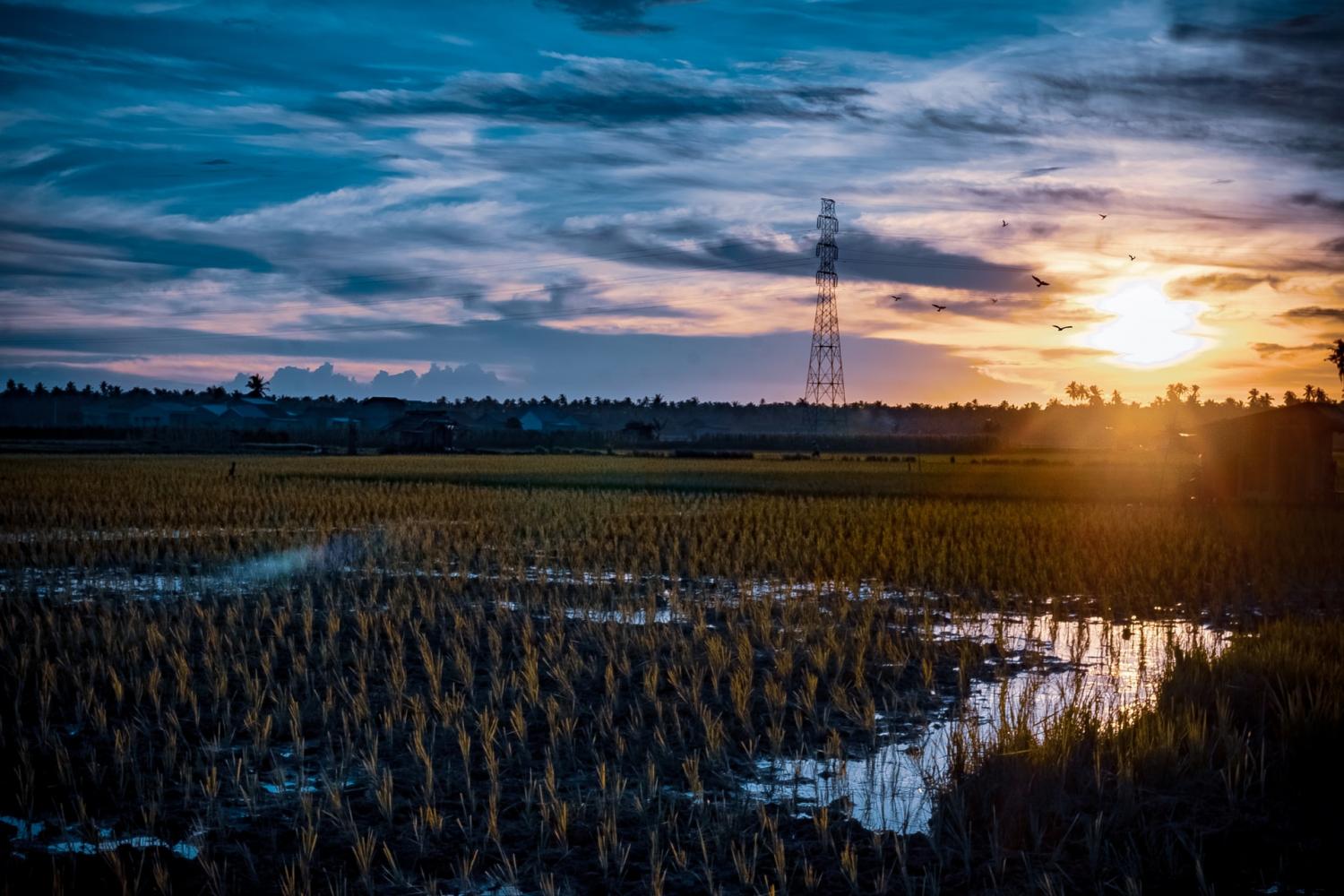
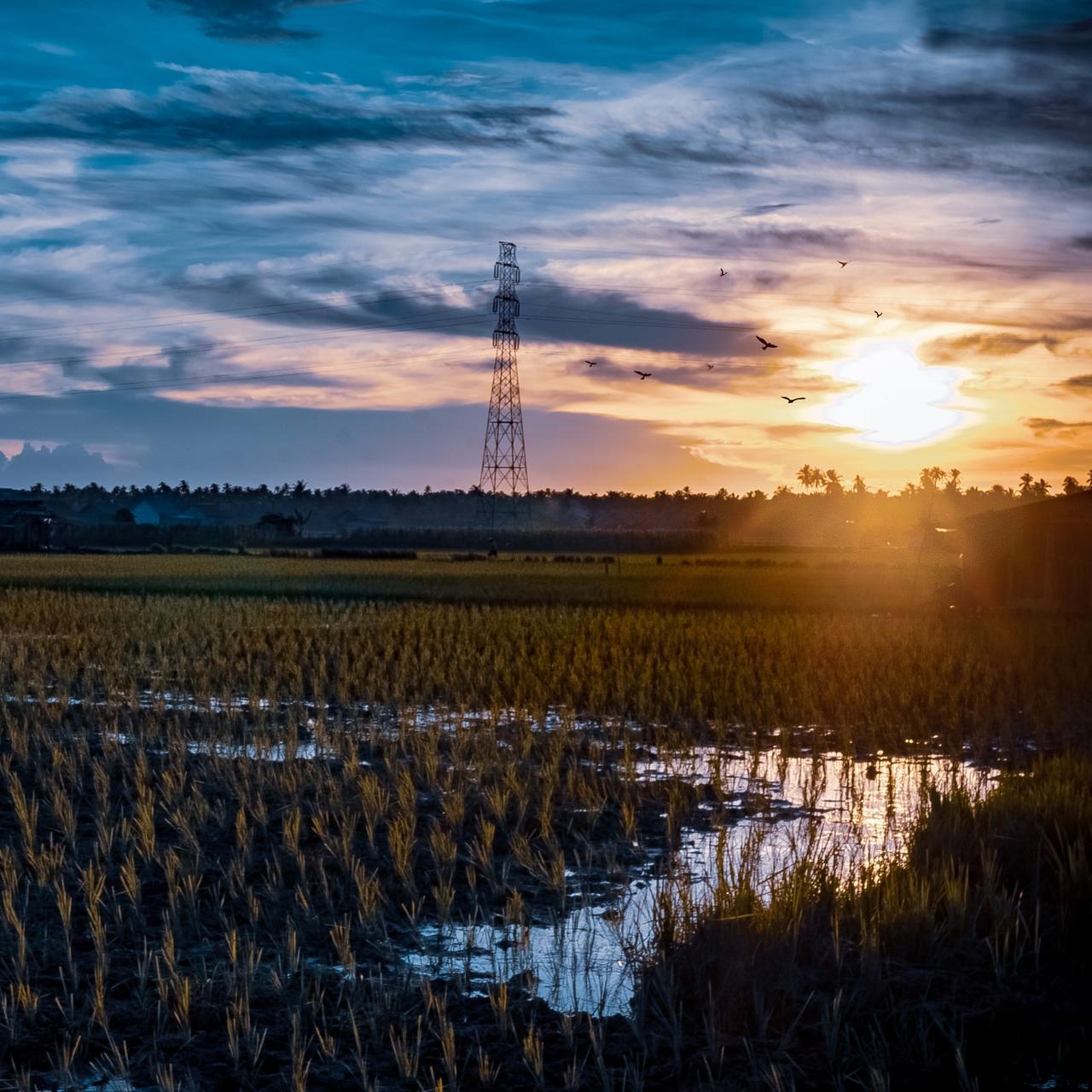
It’s clear that healthcare systems are a vital part of, and will have to adapt to, a changing climate. How that adaptation occurs depends largely on location. Healthcare systems in wealthier countries will undoubtedly focus on energy efficiency, carbon neutrality and finding new treatments for diseases that could develop from a warming plant. For poorer nations, however, the challenge will be providing access to healthcare services in the first place for those who need it the most.
Such access could make a difference, according to a new study that a group of Stanford University researchers released today. And the means of delivery includes one of the oldest types of transactions known to humans: barter.
This isn’t exactly a new idea — here in the states, reports surfaced of patients bartering goods and services for expensive health care services during and after the 2008-2009 financial crisis. Barter was also thrust into the spotlight during the 2010 U.S. midterm elections when a Senate candidate in Nevada suggested patients could pay for healthcare costs with chickens.
But in nations that are in the locus of the global climate action debate, a barter-based system could be part of a solution to addressing healthcare needs and fighting climate change.
For example, researchers at the Stanford Woods Institute for the Environment evaluated the impact of a healthcare clinic close to the island of Kalimantan in Indonesia. In the 10 years after the clinic opened within this small Indonesian community in 2007, Stanford’s researchers looked at both the clinic’s healthcare records and satellite imagery of the surrounding area during the same period. What they found was a 70 percent decrease in deforestation, equivalent to 6,700 acres (10.6 square miles) saved. In contrast, between 1985 and 2001, this specific region lost 60 percent of its forests to illegal logging.
The reason for this turnaround? During that 10-year span, the clinic, with support of the local government and nonprofits, accepted payments for healthcare services through a variety of means, including handicrafts, labor and tree seedlings. The clinic also offered discounts to village residents where it could be verified that there was a decline in illegal logging. Further, the clinic worked with other groups to provide training in sustainable agriculture tactics as well as the sponsoring of a chainsaw buyback program.
“We didn’t know what to expect when we started evaluating the program’s health and conservation impacts, but were continually amazed that the data suggested such a strong link between improvements in health care access and tropical forest conservation,” said Isabel Jones, the study’s lead author, who recently completed her biology Ph.D. at Stanford.
Researchers also concluded that the largest drop in illegal logging occurred near villages with the highest rate of healthcare access due to this same clinic.
This study is more than another example of linking climate change risks to healthcare access. A plan exactly the same as what unfolded in Indonesia may not necessarily work in a different region or a different country. But what was learned in Indonesia can spark new ideas for how to expand access to healthcare services. For companies within the healthcare industry’s value chain — whether they make medical devices, supplies or pharmaceuticals — the Stanford study provides new ideas on how to deploy their goods and services worldwide for the greater good.
What occurred at this clinic in Indonesia also demonstrates the power of partnerships: Companies have the products and checkbooks, while NGOs have the capacity to deliver due to their knowledge of the lay of the land.
The healthcare industry has proven it has the chops to work together on delivering better healthcare across the globe. Other industries, such as the automakers, have also harnessed their products in the push to end poverty. This latest research from Stanford should germinate new ways to tackle both poverty and climate change, two challenges that can’t be solved in silos.
Image credit: Reynardo Etenia Wongso/Unsplash
Tech Startup Provides Barbers the Kits They Need to Boost Voter Turnout

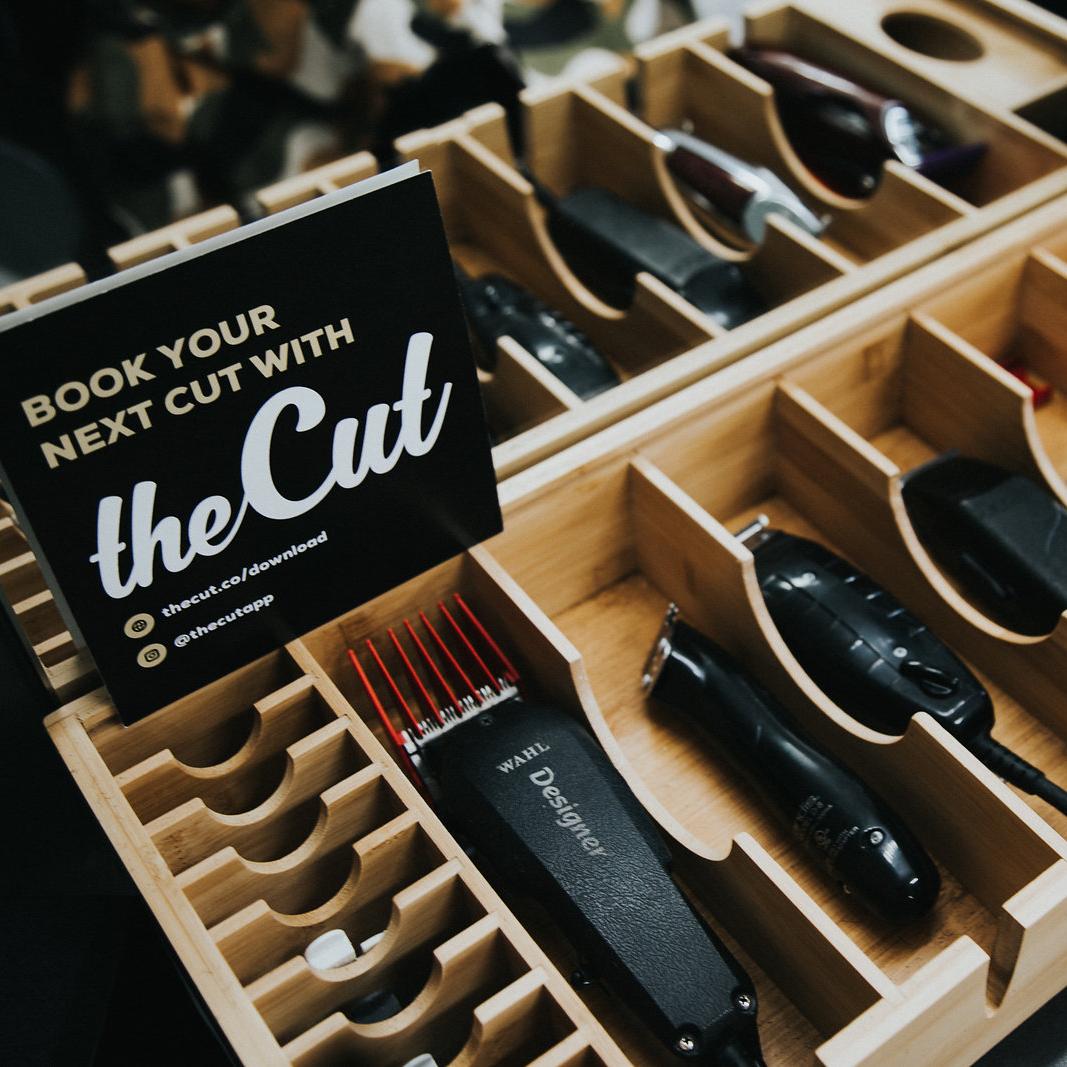
As of press time, well over 50 million Americans have already cast their ballots for next week's presidential election. But despite that impressive number, Election Day could still become Election Week, based on voter turnout. To that end, a next-gen startup has been partnering with an old-school industry to get out the vote.
Based in Washington, D.C., theCut says it is doing its part to boost voter turnout. The mobile barbering app has been working with barber shops as well as the coalition Shape Up the Vote by sending voter registration kits to barbers across the states to make the voter registration process simple.
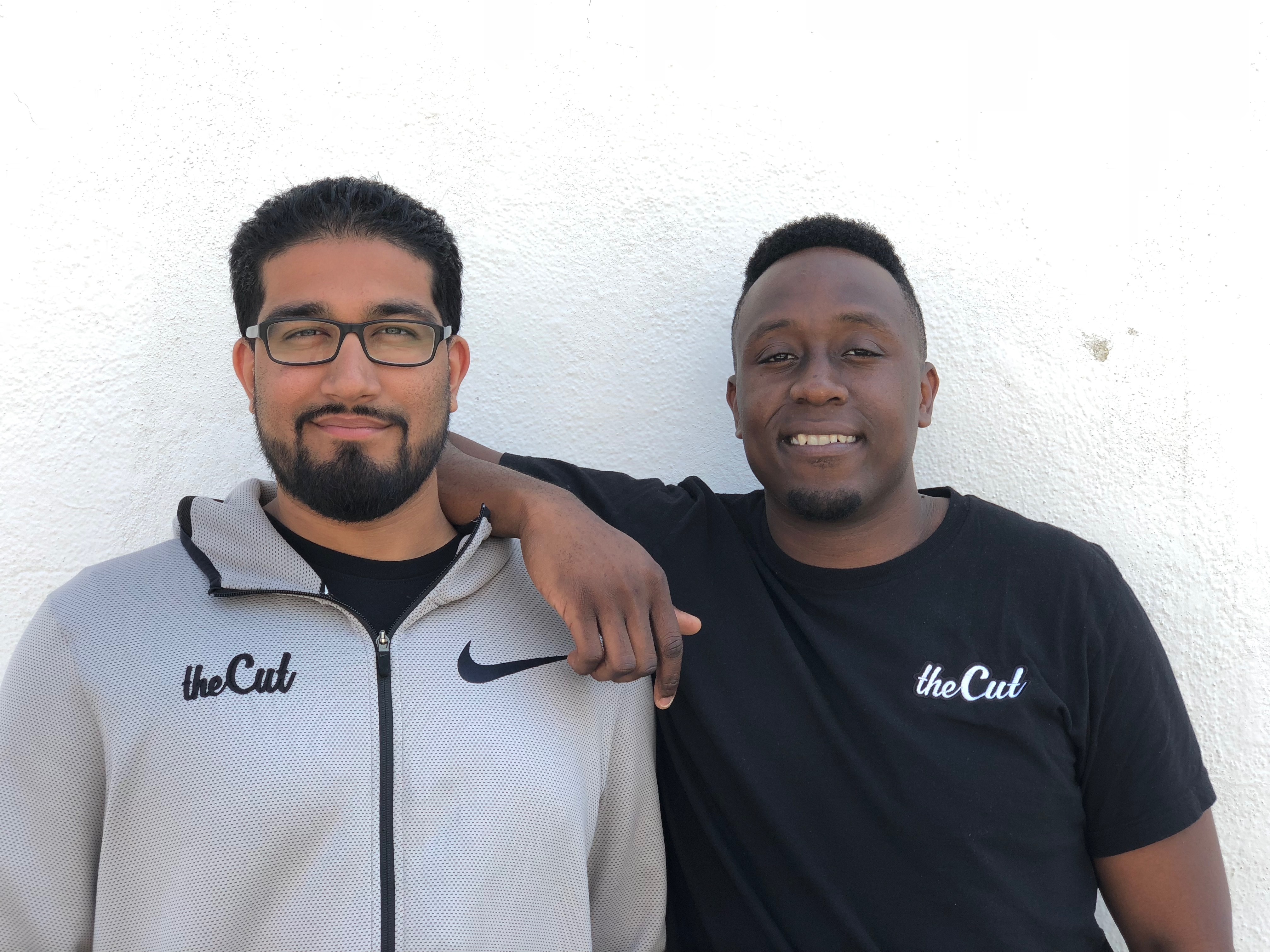
The effort makes sense — after all, barber shops have long been community gathering places to catch up and banter about the latest shenanigans in sports, entertainment and, of course, politics. The founders of theCut realized they had a captive audience, with more than 70,000 barbers, 2 million-plus users and 15 million or so appointments made through the app. In addition, such attempts to boost voter turnout can help counter ongoing voter suppression tactics that continue to fester across the U.S.
"Voting is incredibly important. Black people haven't always had the right to vote, so everyone who is capable should go out and exercise that right as often as they can,” said Obi Omile Jr., co-founder and CEO of theCut, who himself is Black. “I'm excited and proud that we're able to work with Shape Up the Vote to get more people of color registered to vote."
At least one of the candidates realized barber shops show promise as venues to harvest votes during an election that could tighten as Nov. 3 nears. Last month, Joe Biden’s presidential campaign signed on for three ads that were filmed in a Durham, N.C. barber shop.
"We partnered with Shape Up the Vote because barbershops have always been trusted spaces of conversations for people of color. At the same time, barbers are trusted leaders in black and brown communities and barbershops are places where people from all walks of life will eventually come visit,” added Omile.
Neighborhood barber shops have long served as pillars of local communities, but this year they have provided a safe space allowing citizens to exercise a right continually under attack — gaining access to the ballot box.

Image credits: theCut
This Apparel and Footwear Giant Just Invested in City Parks


You might not be familiar with VF Corporation, but you certainly know many of its leading outdoor gear and apparel brands: EastPak, JansSport, Napapijri, The North Face and Timberland are only the start. Now, the company is taking on a project that is certainly timely during the ongoing COVID-19 crisis: expanding access to city parks.
According to the nonprofit The Trust for Public Land, almost 1 in 3 Americans – or about 100 million people – lack access to any city parks within a 10-minute walk of their homes. That eye-popping figure includes 28 million children.
To that end, VF is working with The Trust for Public Land to chip away at that disturbing statistic, starting with a $500,000 grant to the nonprofit VF funded through its foundation. The four projects to benefit from this program are for parks and other open spaces in Atlanta (a rendering of which is shown above), Dallas, Denver and Los Angeles. The grants will accomplish a variety of goals, including, of course, the building and expansion of new city parks, expanding greenbelts or commissioning public art. Further, all four of these projects are predominantly located near or in communities of color.
“Over the last several months, we have seen just how valuable parks are to a healthy, livable, and equitable community,” said Diane Regas, president and CEO of The Trust for Public Land, in a public statement. “We know, though, that not all parks are created equal and more must be done to create high-quality parks where they’re needed most. The work these communities are doing across the country is demonstrative of what happens when people are united for a common cause to improve their neighborhoods. We’re grateful for the partnerships that make change happen, including from The VF Foundation.”
According to the City Parks Alliance, the benefits of city parks are more than a place to walk during self-imposed quarantine or for having a picnic outside. The long-term payoffs include the encouragement of more active lifestyles, which can result in lower healthcare costs; a boost to local economies; lower temperatures in surrounding neighborhoods; and cleaner air, which of course is a boost for public health. And now, city parks are a way for cities to improve equity: Historically, while city planners built parks for the benefit of white communities, they also built many of America’s highways through once-thriving Black neighborhoods.
Image credit: The Trust for Public Land
Bacardi Says ‘Cheers’ to Compostable Bottles


Within its industry, Bacardi has long stood out on the social responsibility front, going above and beyond “drink responsibly” campaigns. Now the Bermuda-based company says it has more than a little skin in the game when it comes to taking on plastic pollution and will launch compostable bottles by 2023.
If these plans come to fruition, the global spirits company said these compostable bottles could replace 80 million bottles, or 3,000 tons of plastic, annually.
The secret? Technology courtesy of Georgia-based Danimer Scientific, which has developed a polymer based on plant seeds of canola, palm and soy, will skirt the environmental problems fossil-fuel based plastics. Danimer Scientific and Bacardi claim these new compostable bottles will decompose in 18 months, whether they are composted, left in soil, or end up in freshwater or the ocean. In contrast, depending on the source cited, conventional plastic bottles take 400 to 500 years to decompose — and then there is that pesky microplastics problem.
Further, the use of this polymer will help Bacardi sidestep one of the wider beverage industry’s larger challenges: the plastic linings found in bottle closures. “It may sound small,” said Jean-Marc Lambert, the company’s senior vice president of global operations, “but add that up across every bottle produced globally, and we’re talking many tons of plastic every day. Once we’ve fixed the problem, we’ll be open sourcing the solution for the entire industry to use.”
Bacardi says it’s also working on a paper-based sustainable bottle, similar to one that a competitor, Diageo, has announced it will roll out next year.
Additional causes that Bacardi has taken on in recent years include helping small businesses recover after hurricanes in the Gulf of Mexico and Caribbean; ocean cleanup efforts including pushing back against the use of plastic straws through a partnership with the NGO Lonely Whale; and supporting job training programs designed to help young people find employment.
In the long run, Bacardi says it has goals to become plastic-free within the next 10 years. That work, in addition to these compostable bottles, include the elimination of single-use plastics within its products, plastic gift box materials, and any plastic items within the point-of-sale materials the company provides to merchants and retailers.
Image credit: Bacardi
Why Businesses Should Go Out of Their Way to Hire Refugees


At the beginning of this tumultuous 2020, the global count of those forcibly displaced by conflict and violence, persecution and human rights violations had increased to a record high of affecting 79.5 million individuals, a population roughly the size of the entire German population. About one-third of them have become refugees.
Although the United States has historically led the world in resettled refugees, recent years have seen dramatic decreases in refugee admission caps. Nearly 85,000 of these displaced citizens were admitted in 2016. That number was cut in 2018 to 45,000 and slashed to 18,000 for 2020. The country currently settles less than one percent of the globe’s displaced people.
Taking to Twitter to advocate for refugees
The pandemic has heightened the need to care for displaced populations. In August, Ben & Jerry’s spoke against the actions of the United Kingdom’s Home Secretary Priti Patel, who attempted to prevent refugees from crossing the English Channel.
The U.K. branch of the ice cream brand tweeted, “Hey @PritiPatel we think the real crisis is our lack of humanity for people fleeing war, climate change and torture. People wouldn't make dangerous journeys if they had any other choice. The U.K. hasn't resettled any refugees since March, but wars and violence continue.”
Ben & Jerry’s represents just one example of how business is stepping up to advocate for refugees. Championing, especially hiring, refugees benefits businesses and energizes the national economy.
Recognizing the economic value of refugees' work
The downward trend of refugee acceptance in the U.S. carries with it an implication that immigrants don’t benefit the country - a claim that couldn’t be further from the truth. The Brookings Institute highlights some ways immigrants contribute to this country, two of which are becoming productive members of a community, often in ways complementary to the native workforce, and successfully engaging in entrepreneurship.
A 2017 study from the bipartisan immigration research and advocacy organization New American Economy revealed that refugee entrepreneurship exceeds that of other groups, including other immigrants and the native-born population. In 2015, 13 percent of refugees were entrepreneurs; that’s 1.5 percent higher than non-refugee immigrants and four percent higher than the U.S. born population.
Hiring refugees is the best business can do
Employers that make the effort to integrate these new citizens into their workforce see higher retention rates in that group of employees than overall, found a study from The New Humanitarian. The study also uncovered how managers learn and grow as refugees are invited to the fold — they become more capable of accommodating the needs of a diverse workforce, gaining open-mindedness and making adjustments like adding flexible time off.
“We’ve had more success looking for character attributes – drive, ambition, integrity – and then training people with those attributes to learn the skills we need,” noted one employer from the study. When that’s the way you approach hiring, “then you can look at anyone,” he said.
Another glimmer of hope in the American landscape comes from the nonprofit We Hire Refugees, which now partners with Atlanta-based refugee-focused staffing agency Amplio Recruiting to increase business support for refugee-centered state and federal policies. Amplio Recruiting reaches to the Raleigh-Durham, North Carolina, and Houston and Dallas-Fort Worth regions in Texas as well. The partnership elevates We Hire Refugees’ mission to inspire businesses to use their expertise, networks and capital to assist, and especially, hire refugees. The nonprofit has a Welcome Pledge for businesses to sign in support of that purpose.
“Refugees are hard working, loyal colleagues,” Sam Pardue of Indow, a window insert manufacturer in Portland, Oregon, who helped create We Hire Refugees, said in a press statement. “Admitting refugees helps people in desperate need and will help us rebuild a robust economy. We need to be letting in more refugees, not fewer.”

Companies like Chobani have already been going out of their way to hire refugees. Founder Hamdi Ulukaya (shown above) has said the best not only businesses but nations can do with increasing refugee populations is to create jobs for them. For his own part, Ulukaya actively recruits immigrants, including refugees, and pays them a living wage.
There is so much more businesses can do. A 2019 study by the Georgetown Institute for Women, Peace and Security found that refugees could contribute an additional $3.2 billion to the U.S. GDP if they were extended the same employment opportunities and wages as native-born Americans. These billions of dollars represent a growth opportunity for the U.S. as a whole, as well as a chance for every single business to step to the plate and step up its bottom line.